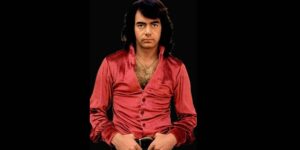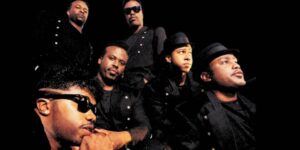The Dawn of a New Era
The 1990s was a transformative time for music, marked by the rise of alternative rock, grunge, and electronic dance music (EDM). While the latter may have started as a niche genre in the 1980s, it was during the 1990s that EDM began to gain mainstream popularity and shape the sounds of the decade. This article explores the key factors that contributed to the explosion of EDM in the 1990s and its lasting impact on the music industry.
The Early Days
In the early 1990s, electronic dance music was still a relatively underground scene, with pockets of popularity in clubs and raves across Europe and the United States. The genre was built upon the foundations laid by pioneers such as Larry Levan, Frankie Knuckles, and DJ Pierre, who developed the sound of house music in the 1980s. As the decade progressed, a new wave of producers and DJs emerged, pushing the boundaries of electronic music and experimenting with new sounds and styles.
The Rise of Techno
One of the most significant developments in the early 1990s was the rise of techno, a subgenre characterized by its fast-paced rhythms and futuristic soundscapes. Cities like Detroit and Berlin became hotbeds for techno production, with pioneers like Juan Atkins, Derrick May, and Kevin Saunderson creating iconic tracks that would shape the sound of EDM for years to come.
The Birth of Trance
As techno continued to evolve, a new subgenre emerged – trance. Characterized by its soaring melodies and hypnotic beats, trance became a staple of the EDM scene, with artists like Tiësto, Paul Oakenfold, and Sven Väth crafting anthemic tracks that would capture the hearts of ravers worldwide.
The Golden Age of Raves
The 1990s was also the era of the great rave, with massive events like Tomorrowland, Sensation, and Love Parade drawing crowds of thousands and cementing the notion that EDM was a force to be reckoned with. Raves became a global phenomenon, with cities like Ibiza, Berlin, and New York becoming hubs for electronic music culture.
The Mainstream Breakthrough
As the decade progressed, EDM began to make its way into the mainstream, with artists like Daft Punk, The Chemical Brothers, and Moby achieving commercial success and broadening the genre’s appeal. Their music often blended elements of rock and pop with electronic production, making it more accessible to a wider audience.
The DJ as Superstar
The 1990s was also the era when DJs began to attain superstar status, with names like Frankie Knuckles, Ron Hardy, and David Morales becoming household names. Their legendary sets and productions had a profound impact on the development of the genre, and their influence can still be heard today.
The Legacy of the 1990s EDM Scene
The 1990s played a crucial role in shaping the course of electronic dance music, laying the groundwork for the global phenomenon it is today. The decade saw the rise of new subgenres, the birth of the rave movement, and the mainstream breakthrough of EDM.
Conclusion
The 1990s was a transformative time for electronic dance music, marked by the rise of new subgenres, the birth of the rave movement, and the mainstream breakthrough of EDM. Today, EDM is a global phenomenon, with festivals like Tomorrowland and Electric Daisy Carnival drawing crowds of millions and cementing its place in popular culture. The legacy of the 1990s EDM scene continues to inspire new generations of producers, DJs, and ravers, and its impact will be felt for years to come.
FAQs
Q: What was the most influential electronic music subgenre of the 1990s?
A: Techno and trance were two of the most influential subgenres of the 1990s, with artists like Juan Atkins, Derrick May, Tiësto, and Paul Oakenfold making significant contributions to the scene.
Q: What was the significance of raves in the 1990s EDM scene?
A: Raves were a key factor in the growth of electronic dance music, providing a platform for fans to come together and experience the music. They also played a crucial role in promoting the genre and attracting new fans.
Q: Who were some of the most influential DJs of the 1990s?
A: DJs like Frankie Knuckles, Ron Hardy, David Morales, and Kevin Saunderson were influential figures in the 1990s EDM scene, known for their legendary sets and productions.
Q: How did the 1990s EDM scene influence the music industry as a whole?
A: The 1990s EDM scene had a significant impact on the music industry, paving the way for the electronic dance music that dominates the airwaves today. It also influenced the rise of other genres, such as indie and alternative rock.
Q: What are some of the most iconic electronic music tracks of the 1990s?
A: Some iconic electronic music tracks of the 1990s include “Sandstorm” by Darude, “One” by Veracocha, “For an Angel” by Paul van Dyk, and “Children” by Robert Miles.






